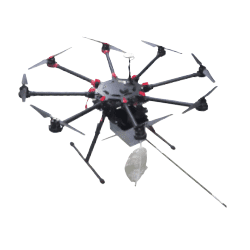Search WikiOdour by Keyword
Biofilter
Overview
Biofilter refers to a biological process where microorganisms (bacteria or fungus) are used to remove pollutants and odour from a gaseous waste stream. The airstream carrying the pollutants passes through the packing bed where biodegradation takes place. The microorganism grows on the media and feeds on the volatile organic compounds and other pollutants on the waste stream and convert it to non-odorous compounds such as CO2 and H2O. Trickling filters and bio scrubbers rely on a biofilm and the bacterial action in their recirculating waters.
Typical odour removal efficiency in biofilters ranges from 75% for highly hydrophobic odorants to 99% for water-soluble odourants.
Biofilters are ideal where pollutant levels are relatively consistent. If pollutant levels fluctuate greatly the bacteria population may not be sustainable and therefore may result in loss of efficiency. Pre-treatment should be used if the toxicity level exceeds the threshold of the micro-organisms. Pre-treatment, especially via chemical scrubbers or water scrubbers, are commonly used to increase moisture and balance PH levels.
Biofilter Material
BioFilter material is categorized as both inorganic media (sand, gravel, geotextile, different shapes of plastic media, glass beads, etc.) and organic media (peat, wood chips, cocoa shell fragments, compost, etc.). Inorganic media typically require less frequent replacement. Organic media provides additional feed to the microorganisms and are typically lower cost.
Biofilters have the advantage of being an environmentally friendly solution with no harmful chemicals or excessive energy requirements. The main disadvantage of biofilters is their sensitivity to variation in pollutant levels, PH, and humidity. Above all, each system is frequently monitored and maintained.
Biofilter Monitoring
In conclusion, open bed biofilter monitoring includes detection of low flow zones using infrared cameras and determination of local biobed efficiency using static hood sampling and in-field olfactometry or in-lab olfactometry.


